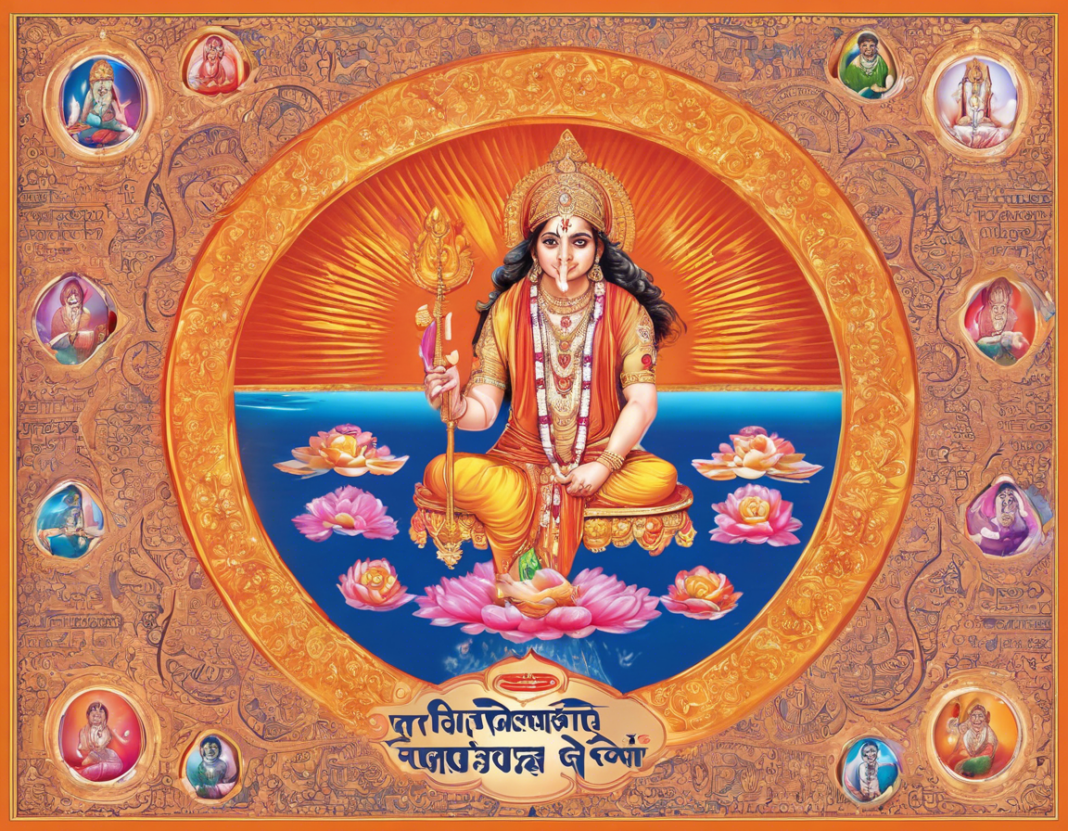As the Hindu New Year, known as Nav Varsh, approaches, it is a time of great significance for those who follow the Hindu calendar. The transition to a new year marks a time of new beginnings, fresh opportunities, and the chance to reflect on the past year while setting intentions for the year ahead. The celebration of Nav Varsh varies from region to region within India and across Hindu communities worldwide, each with its unique customs, traditions, and rituals. In this comprehensive guide, we will explore the significance of Nav Varsh, its astrological importance, traditional celebrations, rituals, and how you can make the most of this auspicious time.
Significance of Hindu Nav Varsh
Hindu Nav Varsh, also known as “Ugadi” in some regions, marks the beginning of the Chaitra month in the Hindu lunar calendar. It signifies the onset of spring and is celebrated with great fervor and enthusiasm by Hindus around the world. The term “Nav Varsh” translates to “new year,” and it symbolizes a time of renewal and rejuvenation. It is believed that on this day, Lord Brahma, the creator of the universe, began the process of creation, making it an auspicious time for new beginnings and fresh starts.
Astrologically, Nav Varsh is considered highly significant as it marks the entry of the Sun into the first sign of the zodiac, Aries, known as Mesh Sankranti. This transition is believed to bring about positive energy and new opportunities for growth and prosperity. It is also a time when many people consult astrologers and seek guidance on auspicious timings for important events such as weddings, business ventures, or housewarming ceremonies.
Traditional Celebrations and Rituals
Gudi Padwa in Maharashtra
In Maharashtra, the festival of Gudi Padwa is celebrated with great pomp and splendor to mark the beginning of the new year. Families create a Gudi, which is a decorated holy flag hoisted outside homes as a symbol of victory and prosperity. The day begins with a traditional oil bath followed by prayers and offerings to Lord Brahma. Special dishes such as Puran Poli and Shrikhand are prepared to mark the occasion.
Ugadi in Andhra Pradesh and Telangana
Ugadi, the Telugu New Year, is celebrated with colorful rangoli designs, traditional rituals, and cultural programs. The day begins with an oil bath followed by prayers at the local temple. Pachadi, a special dish made with a mix of six flavors symbolizing the different emotions of life, is prepared and shared with family and friends.
Vishu in Kerala
In Kerala, the festival of Vishu is celebrated with great enthusiasm as the Malayalam New Year. The day begins with the Vishukani, a ritual where a tray of auspicious items such as rice, fruits, flowers, and coins is arranged and viewed first thing in the morning. This is believed to bring prosperity and good luck for the year ahead.
Baisakhi in Punjab
In Punjab, the festival of Baisakhi coincides with the Sikh New Year and the harvest festival. It is a time of joyous celebrations with traditional music, dance, and feasting. The day begins with prayers at the gurudwara followed by processions and community gatherings.
Puthandu in Tamil Nadu
Puthandu, also known as Tamil New Year, is celebrated with traditional rituals and customs. The day begins with an auspicious oil bath followed by prayers at the temple. Traditional dishes such as Maanga Pachadi, a mango pickle with neem flowers, are prepared and shared with family and friends.
Nav Varsh Celebration Guide
1. Clean and Decorate Your Home
Begin the new year on a fresh note by cleaning and decluttering your home. Decorate your living space with colorful rangoli designs, fresh flowers, and traditional torans to welcome positive energy and prosperity.
2. Prepare Traditional Dishes
Indulge in traditional festive dishes that are specific to your region. Whether it’s Puran Poli in Maharashtra, Pachadi in Andhra Pradesh, or Maanga Pachadi in Tamil Nadu, savor these flavors with your loved ones as you welcome the new year.
3. Seek Blessings at the Temple
Visit your local temple or place of worship to seek blessings for a prosperous year ahead. Offer prayers, light incense sticks, and participate in any special rituals or ceremonies happening at the temple.
4. Set Intentions and Goals
Take some time to reflect on the past year and set intentions and goals for the coming year. Write down your aspirations, dreams, and resolutions to manifest them into reality during the year ahead.
5. Connect with Family and Friends
Celebrate Nav Varsh with your family and friends, either in person or virtually, by exchanging good wishes, sweets, and gifts. Share the joy of the new year with your loved ones and strengthen your bonds.
6. Donate to the Needy
Practice acts of kindness and generosity by donating to those in need. Whether it’s food, clothing, or monetary contributions, spread positivity and abundance by giving back to the community.
7. Participate in Cultural Programs
Immerse yourself in the rich cultural heritage of your region by participating in traditional dances, music, and festivities. Attend local events or virtual programs that showcase the vibrant celebrations of Nav Varsh.
8. Embrace Positive Energy
Meditate, practice yoga, or engage in mindful activities to cultivate positive energy and inner peace. Align your mind, body, and spirit to welcome the new year with a sense of calmness and clarity.
Frequently Asked Questions (FAQs) about Hindu Nav Varsh
1. What is the significance of Nav Varsh in Hindu culture?
Nav Varsh holds great significance as it marks the beginning of a new year in the Hindu calendar. It symbolizes new beginnings, fresh opportunities, and the chance to set intentions for the year ahead.
2. How is Nav Varsh celebrated in different regions of India?
Nav Varsh is celebrated differently in various regions such as Gudi Padwa in Maharashtra, Ugadi in Andhra Pradesh, Vishu in Kerala, Baisakhi in Punjab, and Puthandu in Tamil Nadu, each with its unique customs, rituals, and traditions.
3. What are some common rituals associated with Nav Varsh celebrations?
Common rituals include cleaning and decorating homes, preparing traditional dishes, seeking blessings at the temple, setting intentions and goals for the new year, connecting with family and friends, and participating in cultural programs.
4. How can one make the most of Nav Varsh celebrations?
To make the most of Nav Varsh celebrations, one can clean and decorate their home, prepare traditional dishes, seek blessings at the temple, set intentions and goals, connect with loved ones, donate to the needy, participate in cultural events, and cultivate positive energy through mindful practices.
5. Why is Nav Varsh considered an auspicious time for new beginnings?
Nav Varsh is considered an auspicious time for new beginnings because it marks the transition of the Sun into Aries, symbolizing positive energy, growth, and prosperity. It is believed to be a favorable time to embark on new ventures, set goals, and embrace fresh starts.
In conclusion, Hindu Nav Varsh is a time of joy, renewal, and celebration that brings together families and communities to welcome the new year with positivity and optimism. By embracing the traditions, rituals, and customs associated with Nav Varsh, one can set the tone for a year filled with blessings, abundance, and new opportunities. May the spirit of Nav Varsh inspire you to embark on a journey of growth, fulfillment, and happiness in the year ahead.




